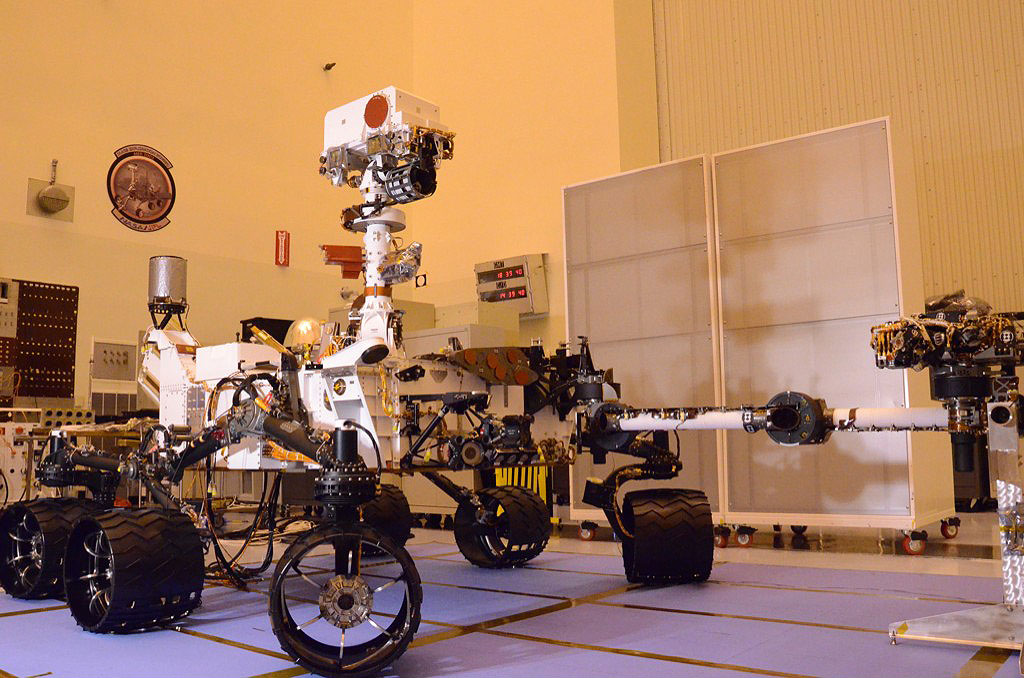Mars Rover's Hovering Act Will Have NASA Scientists Biting Nails

Scientists are jittery but thrilled about the upcoming launch of NASA's Curiosity rover, the largest Mars rover yet.
The $2.5 billion Curiosity, also known as NASA's Mars Science Laboratory, is set to lift off Nov. 25 at 10:25 a.m. EST (1725 GMT), atop an Atlas 5 rocket from Cape Canaveral Air Force Station in Florida.
The 1,980-pound (900-kilogram) vehicle has been under development for seven years.
"It's a momentous occasion," said Doug McCuistion, director of the Mars program at NASA headquarters in Washington, during a briefing today (Nov. 10). "We're just thrilled that we're at this point. It's not your father's rover."
At roughly the size of a Mini Cooper, Curiosity is about twice the size of previous Mars rovers. It's packed with 10 instruments designed to search for signs that the Red Planet was ever habitable. It will be the first instrument on Mars with the ability to dig up samples of rock, drill into them and analyze their composition. [Photos of NASA's Curiosity Rover]
"This is a Mars scientist's dream machine," said Ashwin Vasavada, Curiosity deputy project scientist at NASA's Jet Propulsion Laboratory in Pasadena, Calif. "It's the most capable scientific explorer we've ever sent out" to another planet.
Another distinctive feature of the rover is its unique landing mechanism, designed to accommodate its hefty size. After an 8 1/2-month flight, the spacecraft carrying Curiosity will begin descending to Mars using parachutes. Then the descent stage of the spacecraft will take over, depending on thruster propulsion for control. When it gets close enough, the descent stage will hover and act as a "sky crane," lowering the rover gently to the ground on tethers.
Breaking space news, the latest updates on rocket launches, skywatching events and more!
"We're confident, but it is clearly not risk-free," said Pete Theisinger, Curiosity's project manager at JPL. "Any entry and landing on Mars is a place where you take pause and bite your nails a little bit."
The tense moment is due to occur in August 2012.
Researchers chose their landing site, Gale Crater, from 60 candidate spots. The 96-mile-wide (154 kilometers) crater has a mountain in its center with exposed rock layers dating from different periods in the planet's history.
Scientists think it offers a good chance to learn more about whether the Red Planet was hospitable to life in its past.
"We've known now for decades that there's evidence for rivers and even possible evidence for a lake in the crater we're going to," Vasavada said.
You can follow SPACE.com assistant managing editor Clara Moskowitz on Twitter @ClaraMoskowitz. Follow SPACE.com for the latest in space science and exploration news on Twitter @Spacedotcom and on Facebook.

Clara Moskowitz is a science and space writer who joined the Space.com team in 2008 and served as Assistant Managing Editor from 2011 to 2013. Clara has a bachelor's degree in astronomy and physics from Wesleyan University, and a graduate certificate in science writing from the University of California, Santa Cruz. She covers everything from astronomy to human spaceflight and once aced a NASTAR suborbital spaceflight training program for space missions. Clara is currently Associate Editor of Scientific American. To see her latest project is, follow Clara on Twitter.

